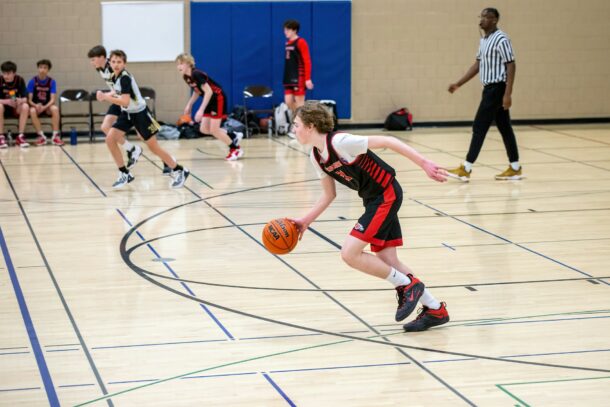Youth basketball coaching is an exhilarating yet challenging journey, and one of the keys to success lies in choosing the right practice drills to populate your practice plan. In this article, we’ll delve deeper into a systematic approach to selecting basketball drills, drawing insights from valuable discussions on prioritizing fundamentals, proper technique, live situations, game-like drills, gradual progression, repetition, team needs, and age-appropriate considerations.
1. Fundamentals Are Key
Building a strong foundation begins with emphasizing fundamental skills. The video underscores the importance of focusing on key aspects such as dribbling, passing, shooting, and footwork. These fundamental skills are the building blocks of a player’s basketball prowess, and the drills selected should align with honing these core competencies.
2. Proper Technique Matters
The video below stresses the significance of proper technique in every drill. Coaches are encouraged to ensure that players not only execute the fundamental skills but also pay attention to correct form. By ingraining proper techniques early on, players develop habits that contribute to long-term success on the court.
3. Navigating Live Situations
Dynamic and unpredictable, basketball demands quick decision-making and adaptability. The video below suggests incorporating drills that simulate live game situations. These exercises help players think on their feet, fostering a level of comfort when faced with real-time challenges during matches.
4. Game-Like Drills for Real Progress
The video introduces the concept of game-like drills, emphasizing their importance in bridging the gap between practice and actual games. Coaches are advised to integrate drills that replicate in-game scenarios, allowing players to apply their skills in situations they’re likely to encounter during competition.
5. Gradual Difficulty Progression
To keep players engaged and motivated, the video advocates for a gradual increase in drill difficulty. Coaches should start with fundamental drills and progressively introduce more complex exercises as players become more proficient. This approach ensures that players are consistently challenged, promoting continuous improvement.
6. Embrace Repetition
Repetition is highlighted as a crucial factor in skill development. While variety is essential, the video suggests revisiting key drills to reinforce fundamental concepts. Consistent repetition aids in building muscle memory, a key component in mastering skills over the course of a player’s development.
7. Specific Team Needs
Tailoring drills to address the specific needs of the team is emphasized. The video encourages coaches to assess the strengths and weaknesses of their team and adjust practice plans accordingly. Whether focusing on offensive strategies, defensive tactics, or improving transition play, customizing drills enhances overall team performance.
8. Age-Appropriate Practice Drills
Acknowledging the diverse stages of physical and cognitive development in youth players, the video cautions coaches to select age-appropriate drills. The coaches urge others to be mindful of the cognitive and motor skills of their players, avoiding the imposition of drills designed for higher age groups.
In conclusion, a successful youth basketball coaching strategy requires a thoughtful selection of practice drills. By prioritizing fundamentals, focusing on proper technique, simulating live situations, incorporating game-like scenarios, ensuring gradual difficulty progression, embracing repetition, addressing team needs, and considering age-appropriate factors, coaches create a practice environment that maximizes skill development and cultivates a passion for the game. Remember, a well-crafted practice plan sets the stage for success on the basketball court and beyond.
Related: 5 Dynamic Basketball Warm-Up Drills
Resources:
Coach Unplugged Podcast:
If you found this useful, don’t forget to check out additional blog posts at TeachHoops.com. Also, check out TeachHoops on Facebook, Twitter, Instagram and YouTube.








